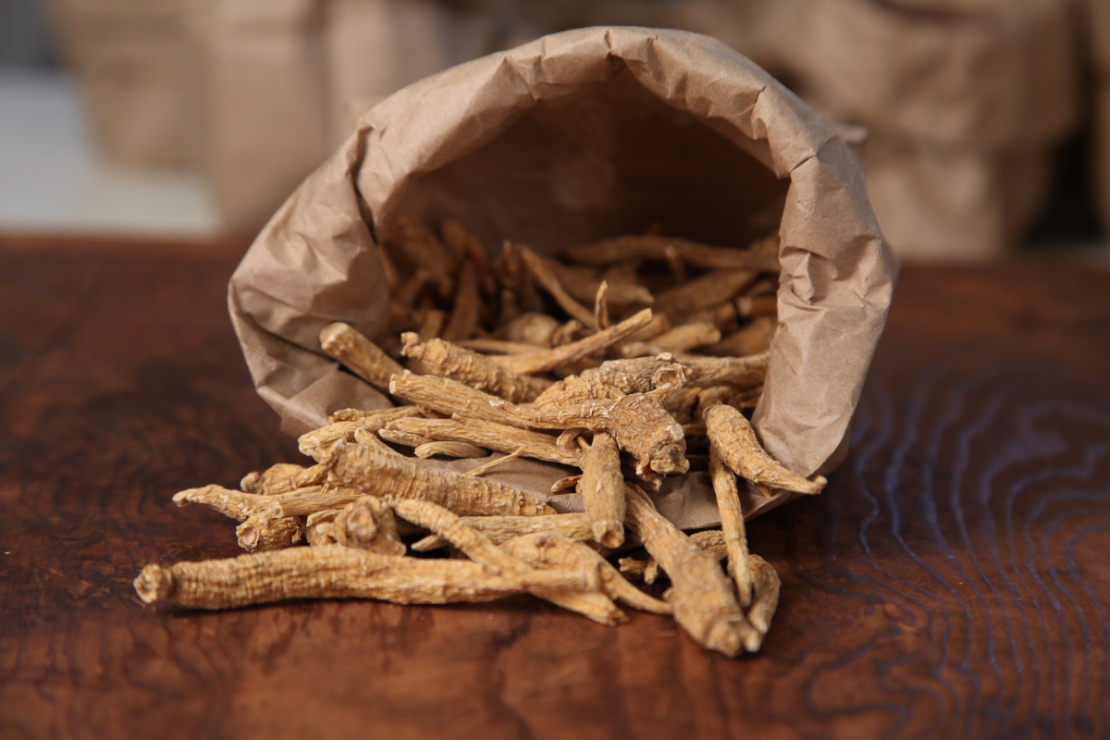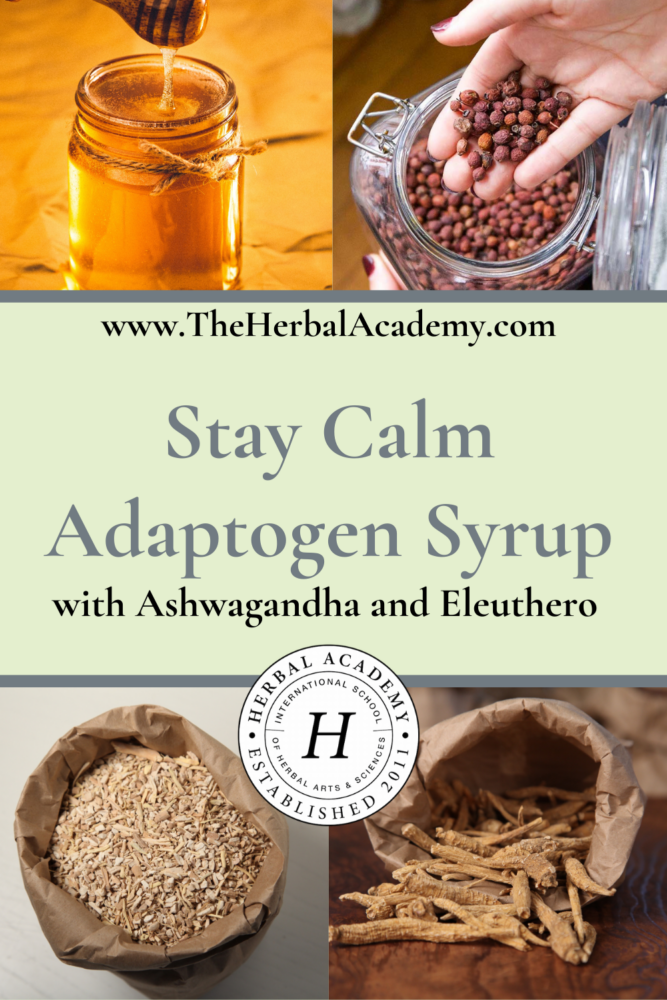
Stay Calm Adaptogen Syrup with Ashwagandha and Eleuthero
Provide your body with the tools it needs to improve its stress response through an adaptogen syrup. Adaptogens are those herbs found to promote the regulation of the hypothalamic, pituitary, and adrenal glands (Brusie, 2017). By reducing fatigue and enhancing focus, adaptogens promote a sense of overall wellness.
A commonly used adaptogen, ashwagandha (Withania somnifera) root has anti-inflammatory properties and has been found to lower both blood sugar and cortisol levels. Studies have shown ashwagandha supplements are related to improved memory and attention (Spritzler, 2019).
This adaptogen syrup recipe also uses eleuthero (Eleutherococcus senticosus) root, another adaptogen known to modulate blood sugar levels and improve cognitive function (Huizen, 2017).
Combining both of these adaptogens with the immune-supportive properties of hawthorn (Crataegus monogyna) berries and the sweetness of locally sourced honey ensures this adaptogen syrup is sure to be a go-to tonic in any natural household.
This tasty little blend helps to gently create a strong foundation, especially during times of stress or when one has been overwhelmed for a long time. This recipe is broad in scope and thus easy to adapt to your individual needs. Yield: 8 ounces. 3 tablespoons ashwagandha (Withania somnifera) rootStay Calm Adaptogen Syrup
3 tablespoons eleuthero (Eleutherococcus senticosus) root
3 tablespoons hawthorn (Crataegus monogyna) berries
1 quart cool water
1-2 cups of honey or sugar
In Closing,
The dosage will depend on the herbs used in the syrup, the situation being addressed, and the age of the recipient. A general dosage is a ½ teaspoon to 1 tablespoon taken 1 to 3 times a day with increased frequency during an acute phase of symptoms (Groves, 2016).
Here are some additional simple herbal syrup recipes for you to try:
Elderberry Cough Syrup
Ginger Syrup

REFERENCES
Brusie, C. (2017). Adaptogenic herbs: list, effectiveness, and health benefits [Online article]. Retrieved from https://www.healthline.com/health/adaptogenic-herbs
De Luca, D. (1998). Botanica erotica: arousing body, mind, and spirit. Rochester, VT: Healing Arts Press.
Felter, H. W. (1922). The eclectic materia medica, pharmacology and therapeutics. Retrieved from http://www.henriettes-herb.com/eclectic/felter/vanilla.html
Felter, H. W. (1898). King’s American dispensatory. Retrieved from http://www.henriettes-herb.com/eclectic/kings/vanilla.html
Fortini, A. (2005). The white stuff: how vanilla became shorthand for bland [Online article]. Retrieved from http://www.slate.com/articles/life/food/2005/08/the_white_stuff.html
Groves, M. N. (2016). Body into balance: an herbal guide to holistic self-care. North Adams, MA: Storey Publishing.
Huizen, J. (2017). 12 potential health benefits of eleuthero [Online article]. Retrieved from https://www.medicalnewstoday.com/articles/319084
Justis, A. (2016). How to make a simple syrup [Blog post]. Retrieved from https://theherbalacademy.com/herbal-syrup/
Spritzler, F. (2019). 12 proven health benefits of ashwagandha [Online article]. Retrieved from https://www.healthline.com/nutrition/12-proven-ashwagandha-benefits#1








